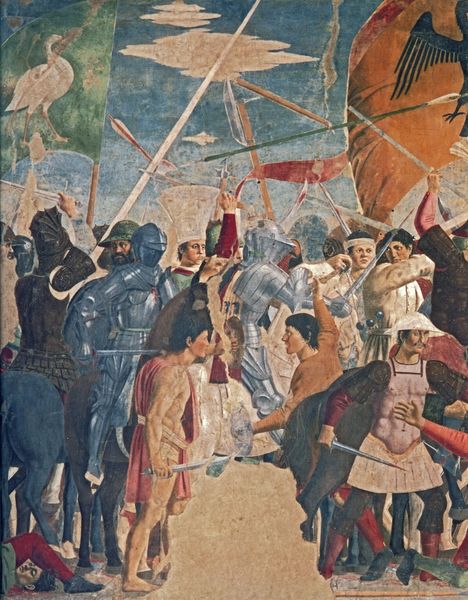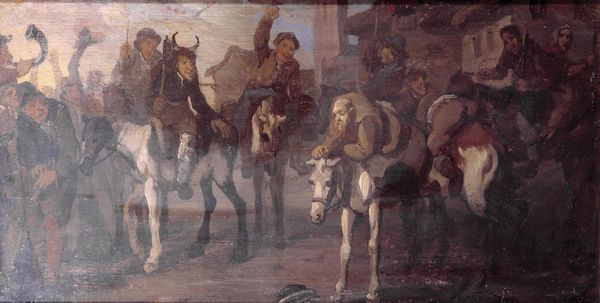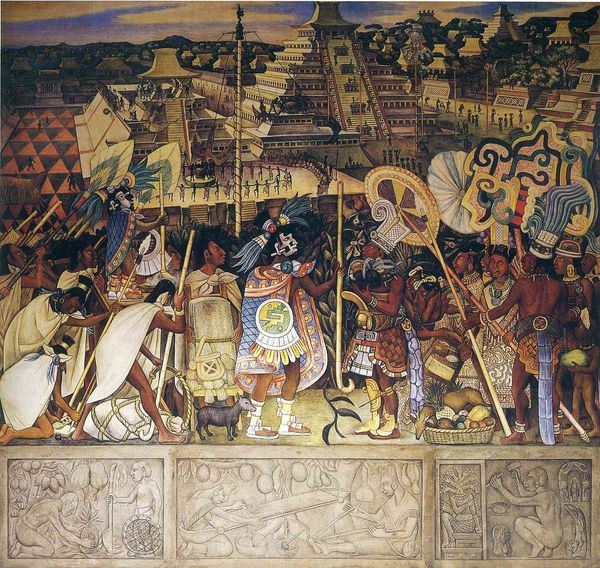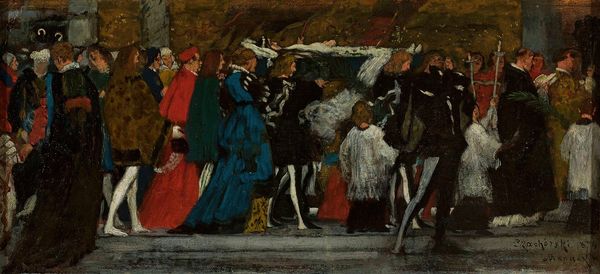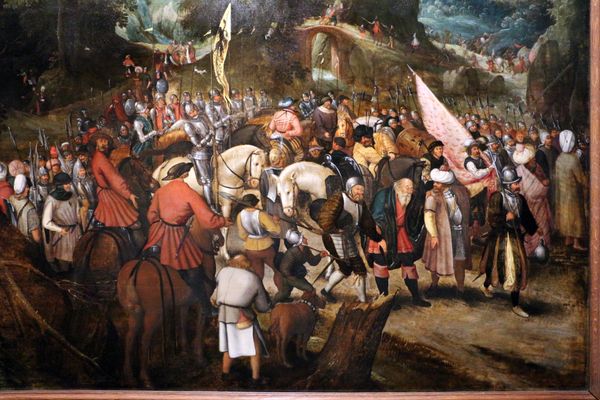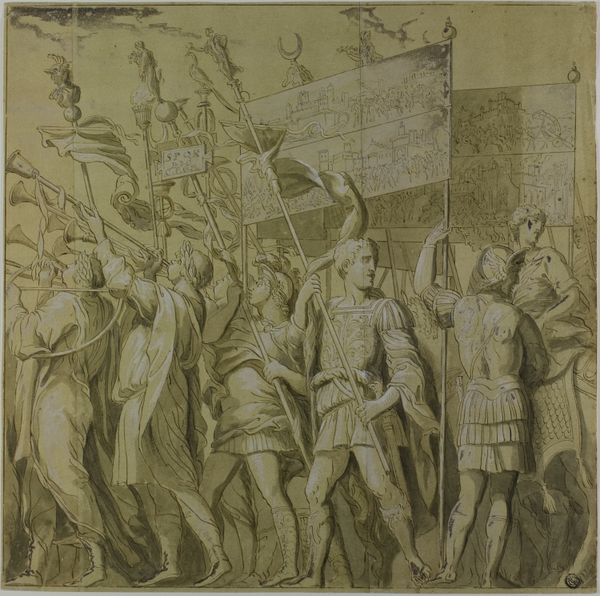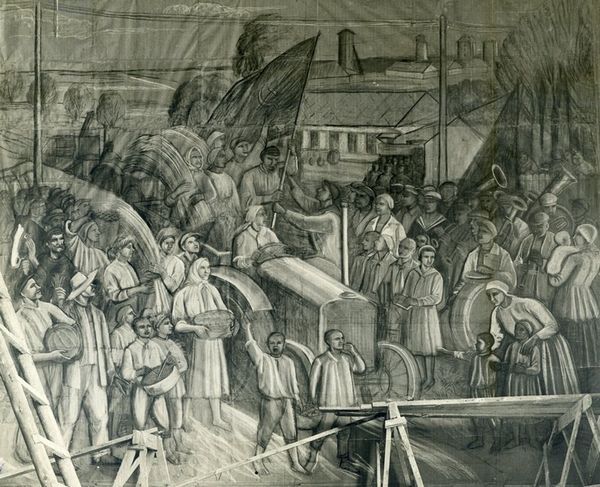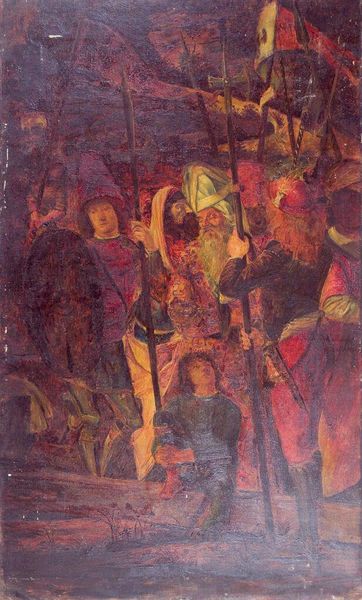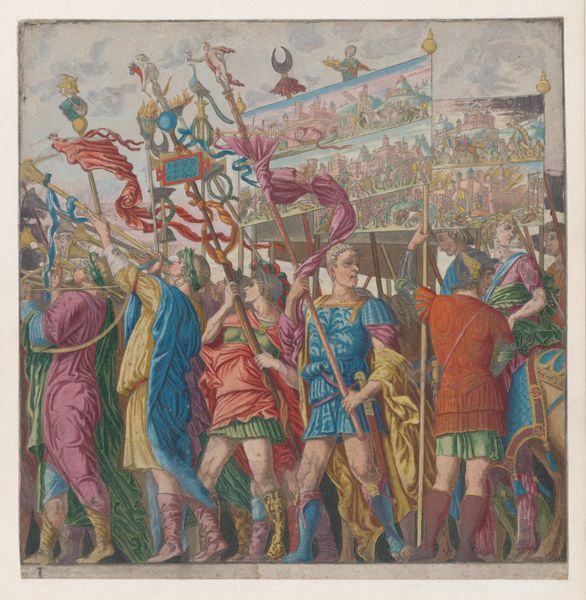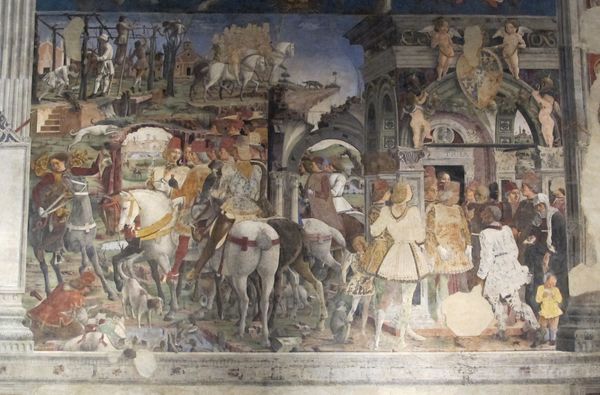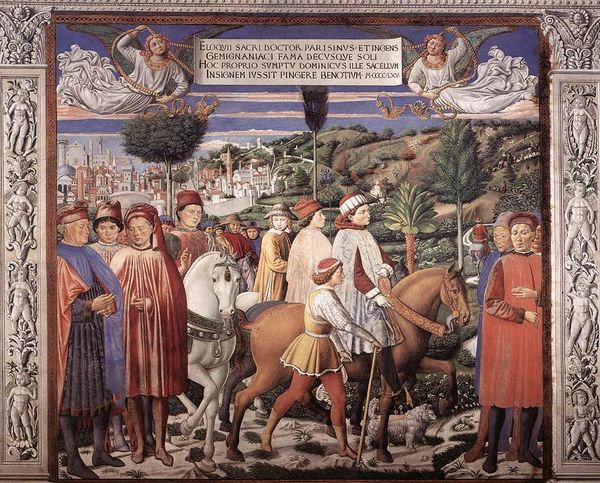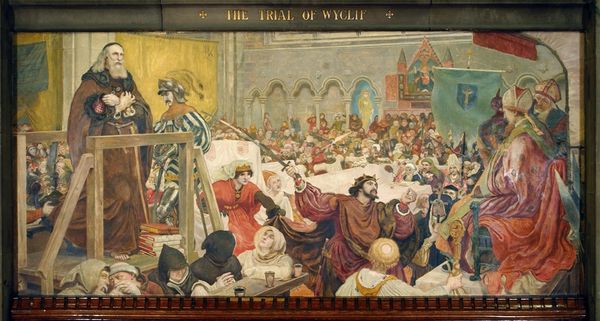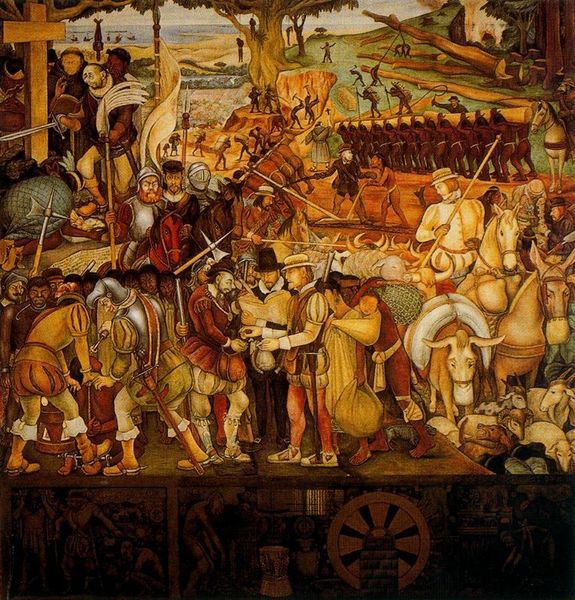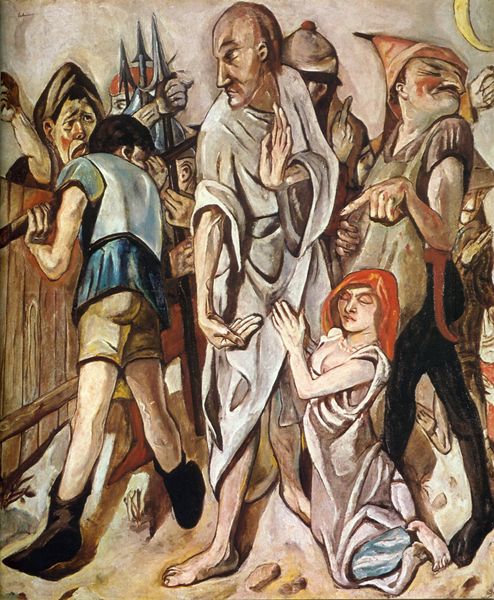
Battle between Heraclius and Chosroes (detail) 1466
0:00
0:00
pierodellafrancesca
Basilica of San Francesco, Arezzo, Italy
painting, fresco
#
narrative-art
#
painting
#
figuration
#
fresco
#
oil painting
#
christianity
#
history-painting
#
italian-renaissance
Copyright: Public domain
Curator: Let's take a look at a detail from Piero della Francesca's "Battle between Heraclius and Chosroes," a fresco dating back to 1466. Editor: It's faded, definitely, but there’s a certain stillness, a hushed quality. Even in the midst of what’s supposed to be a battle scene, the figures possess this amazing restraint, almost meditative quality. Curator: Yes, Piero's unique style truly captures that sense of dignified calm. He was, of course, fascinated with mathematical precision and geometry, which influenced his approach to composition, and the effect of light. We should add it’s narrative art at its finest. Editor: Definitely narrative. Look at how the flags, particularly those depicting Black figures, play into the rhetoric of the victors—this is more than just depiction; it’s symbolic domination, part of an overarching narrative legitimizing power dynamics, one where we still feel their impact. How does this frozen battle reflect or critique its patron’s world? Curator: From a formal standpoint, the use of perspective draws our eye, focusing it on this small cross amidst the tumult, creating both spatial harmony and thematic clarity within the architectural framework depicted behind. Note that Piero arranges these characters meticulously to achieve that very balanced structure, using tonal variations that seem very contemporary! Editor: Balance doesn’t always mean equity, does it? It’s not a pure image removed from power structures, I feel that seeing history is key to facing contemporary realities in society. Considering both artist intent, and also audience impact. It's a work that needs continuous interrogation. Curator: It's undeniable that Piero has crafted something incredibly precise, and beautiful in terms of how he captured light to render form... It leaves me speechless. Editor: I feel the work leaves an observer to contend with how we view this moment that the Italian Renaissance marked an intersection in geopolitical strategy. So what, it can provide for viewers both new understanding on historical context and insight into today’s global complexities? Curator: It's interesting to think how even in the incomplete state we see it now, the mastery is clear. Editor: I'm more keen to understand who these players represented here were.
Comments
No comments
Be the first to comment and join the conversation on the ultimate creative platform.
